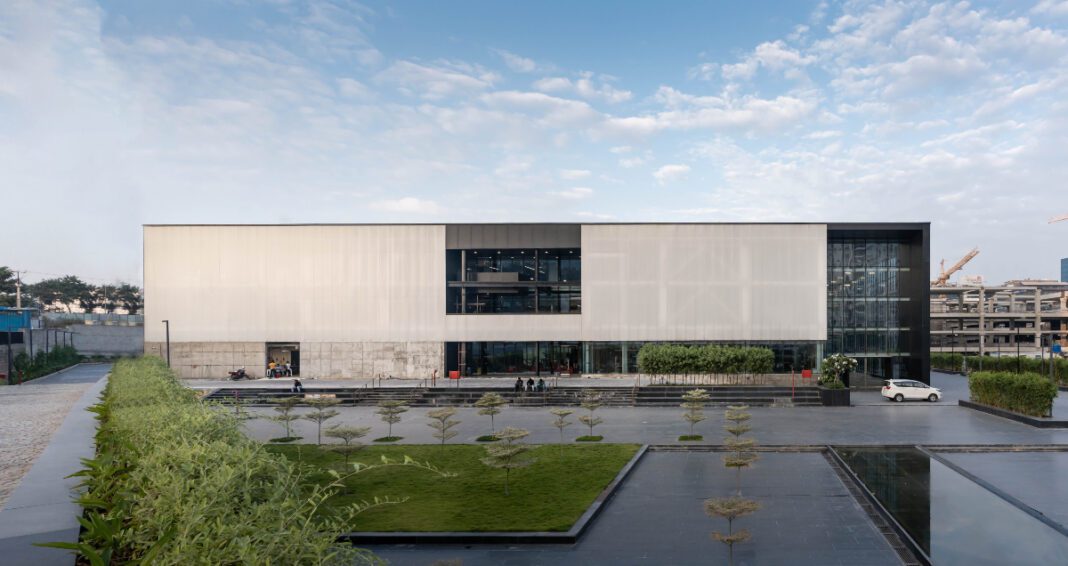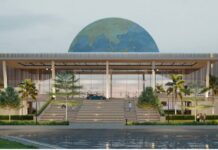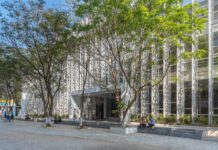T-Works, designed by Studio Chintala, has significantly impacted India’s architectural landscape. This innovative structure, celebrated for its groundbreaking minimalist design, holds the distinction of being India’s largest prototyping centre.
As India’s largest prototyping centre, T-Works redefines prototyping by providing a state-of-the-art facility equipped with cutting-edge technology. Spanning over 78,000 sq ft, the centre offers a versatile and collaborative environment for startups, designers, and researchers to transform ideas into tangible realities. Its advanced prototyping labs, featuring 3D printing, electronics, robotics, and augmented reality, enable rapid prototyping and iterative design.
The design’s uncluttered aesthetic fosters an environment conducive to creativity and collaboration, empowering users to explore their innovative potential. Diwakar Chintala, architect and founder of Studio Chintala, explains that the philosophy behind T-Works was to create a space that nurtures innovation and experimentation. The minimalist approach eliminates distractions, placing the creative process at the forefront.
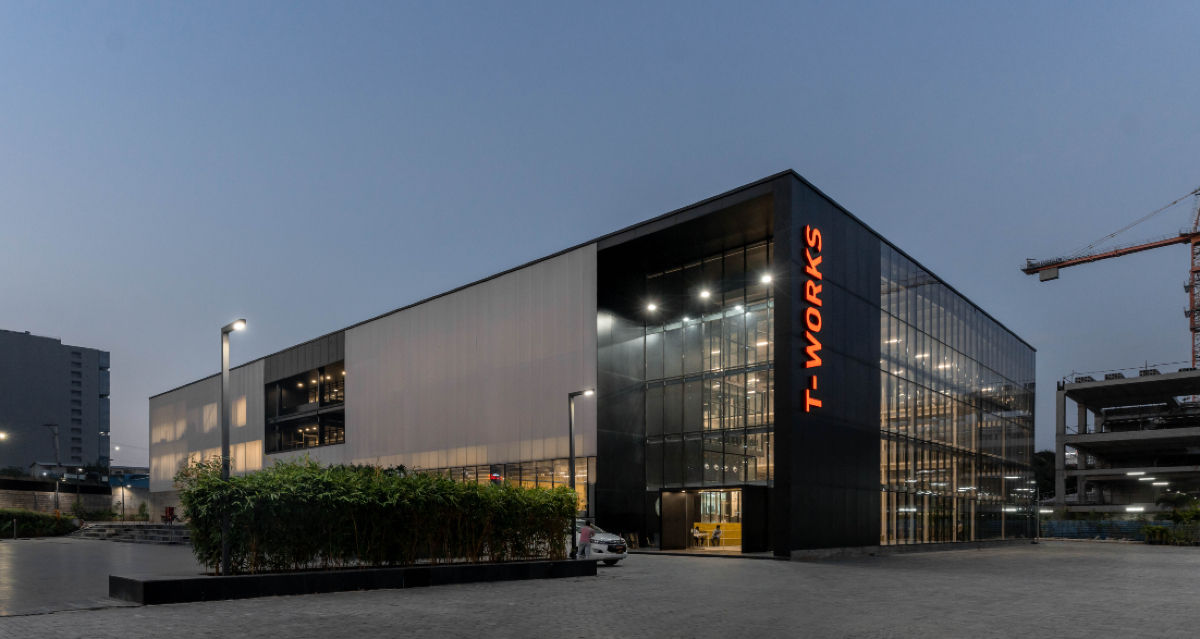
Beyond its technical capabilities, the facility enriches the innovation ecosystem through workshops, training programs, and mentoring sessions. Located on a sprawling three-acre campus in Hyderabad, the facility features an expansive urban plaza that serves as a vibrant hub for creative discussions. A central triple-height atrium seamlessly connects functional spaces across floors, enhancing interaction and collaboration.
T-Works is poised to profoundly impact India’s innovation landscape by empowering startups, designers, researchers, and hobbyists to develop transformative products. By fostering a culture of creativity and collaboration, it supports the growth of the maker community and accelerates the development of innovative solutions.
Space to Innovate
The vision for T-Works was to create a space that fosters innovation by providing an environment conducive to creativity. Studio Chintala embraced a functional design approach to realise this vision. By minimising visual and physical clutter, the design enables users to focus, collaborate, and unleash their innovative potential. This approach also honors India’s rich heritage of craftsmanship and hands-on creativity, revitalising a tradition that has gradually waned.
The facility’s spatial planning prioritises adaptability, featuring modular and multifunctional areas tailored to a variety of activities, from 3D printing and electronics to robotics and augmented reality. The central triple-height atrium serves as the facility’s backbone, facilitating connectivity and interaction across floors. This open layout encourages collaboration while ensuring efficient workflows and seamless accessibility.
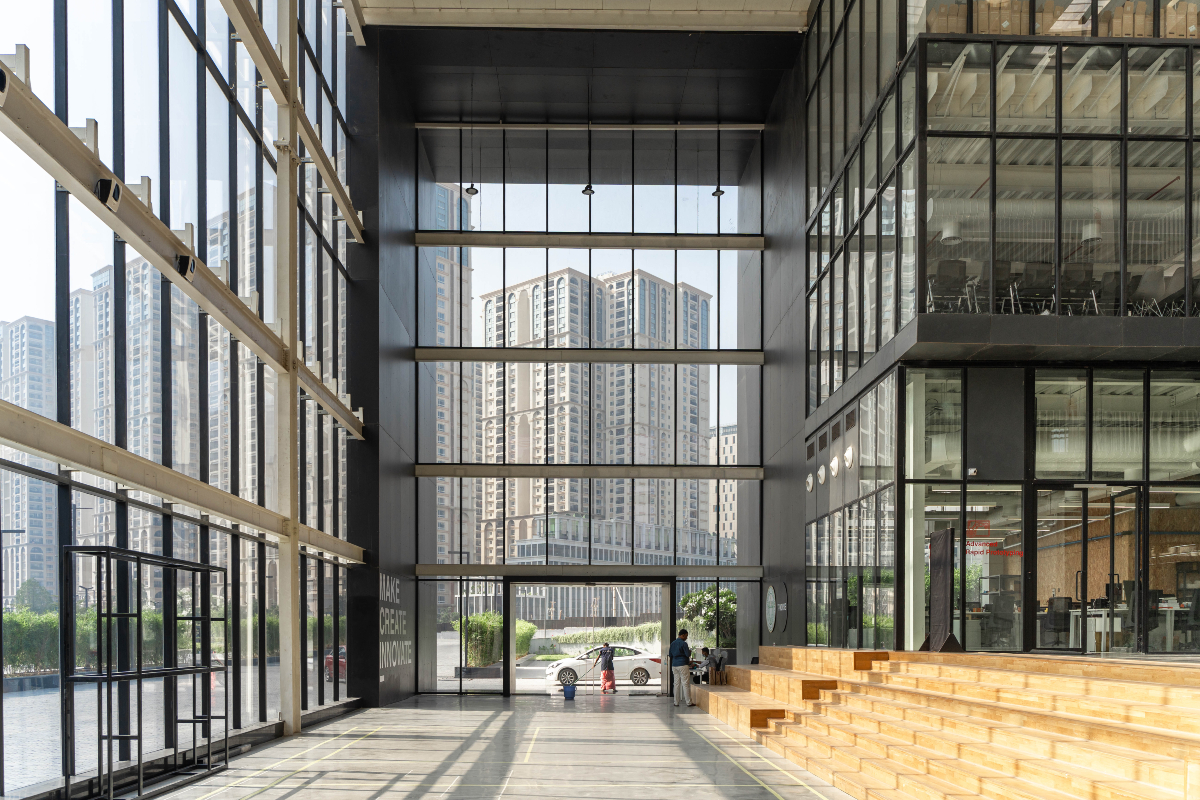
To maintain a comfortable and distraction-free environment, T-Works incorporates features such as double-glazed insulation and noise cancellation. These thoughtful design elements create a productive workspace that supports focused and innovative efforts.
Materials with a Mission
The material choices for T-Works were guided by a commitment to functionality, aligning with the studio’s philosophy: design is driven by purpose, and aesthetics naturally emerge from logical and clear solutions. This approach ensures that every design element serves a practical need, with beauty as an organic byproduct of thoughtful problem-solving.
Steel was chosen for its exceptional strength and durability, providing a resilient structural framework that ensures the building’s longevity. For the building envelope, polycarbonate was selected due to its ability to diffuse natural light effectively, creating bright, glare-free interiors that promote productivity. To enhance energy efficiency and structural integrity, PUF (Polyurethane Foam) panels were incorporated for their superior insulation and lightweight properties.
Maintaining high-quality design and materials while adhering to budget and timeline constraints required planning and strategic resource allocation. The project emphasised investing in durable, high-quality materials while minimising waste through clever planning and efficient processes.
Additionally, the use of durable and efficient materials like polycarbonate and PUF panels not only ensured energy efficiency and reduced maintenance needs but also contributed to long-term cost savings.
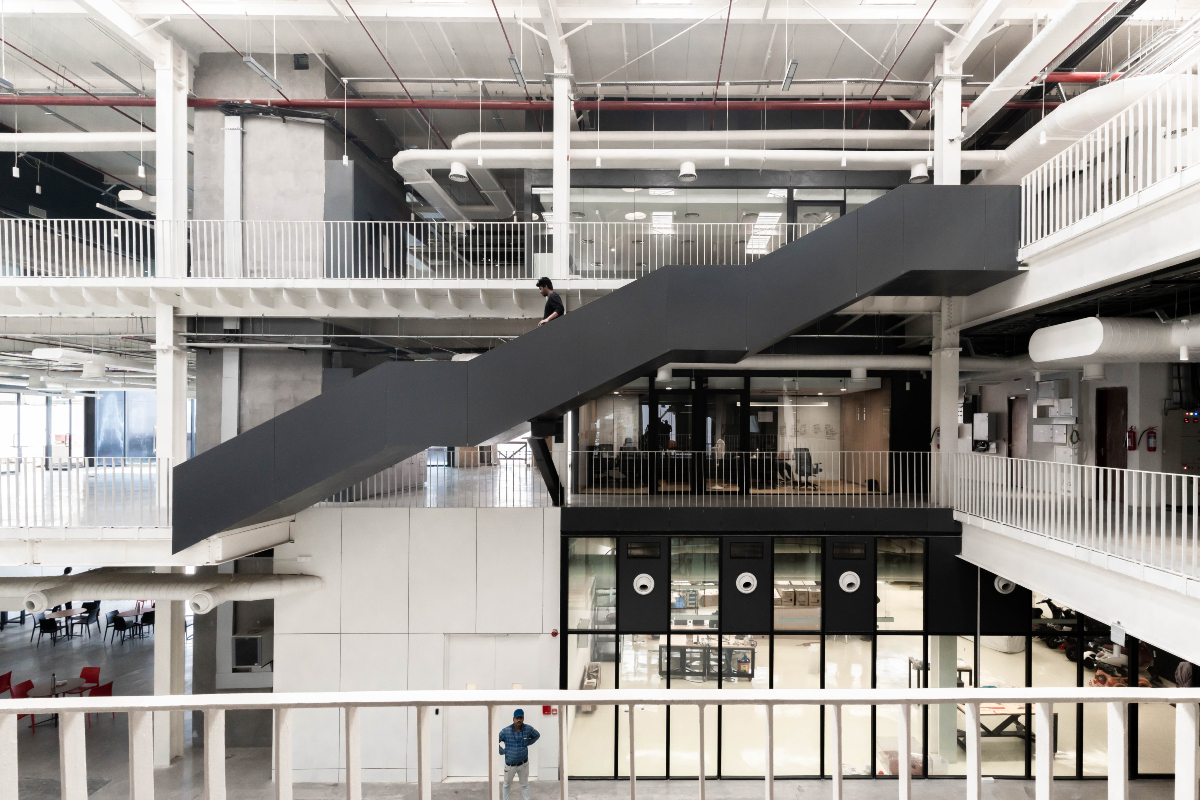
Tech-driven
BIM significantly enhanced the design and execution of T-Works by providing a comprehensive platform for collaboration, coordination, and visualisation. As a government project, the integration of such a transparent design process added value, allowing for an open exchange of ideas and fostering a collaborative environment throughout the development.
BIM enabled the project team to create detailed 3D models, streamline workflows, and ensure accurate documentation, which was particularly valuable in a public-sector context. It also facilitated better decision-making by allowing stakeholders to visualise the project in real-time and make adjustments as needed.
Other innovative construction technologies used in the project included advanced prototyping equipment, cutting-edge fabrication techniques, and sustainable building practices. These technologies ensured precision, efficiency, and sustainability throughout the construction process, while aligning with the project’s commitment to transparency and responsible resource management.
Smartly Sustainable
Sustainable design practices were integral to the T-Works project, reflecting the center’s values of environmental responsibility and innovation. The use of a translucent polycarbonate building envelope maximised natural light, reducing the need for artificial lighting and lowering energy consumption. PUF panels provided excellent thermal insulation, contributing to energy efficiency.
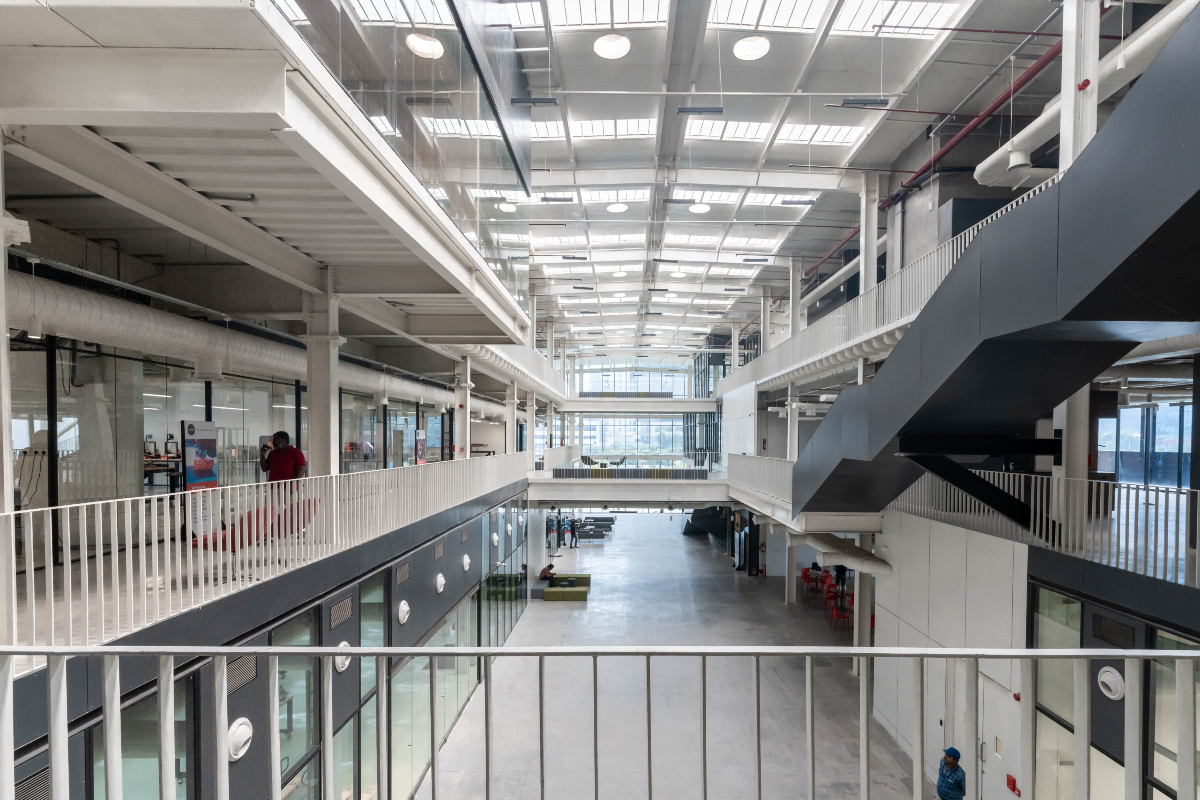
The integration of passive design strategies, such as optimising building orientation and natural ventilation, further enhanced sustainability. These practices not only reduced the environmental impact but also created a healthier and more comfortable environment for users.
However, as a manufacturing unit prototype with equipment that generates heavy fumes, there were inherent challenges in maintaining air quality. To address this, a dedicated exhaust system was installed. Not wanting to compromise on thermal comfort, the team innovated within the HVAC system, creating a hybrid solution that combined conventional evaporation cooling with other efficient techniques to ensure a comfortable and sustainable environment.
One of the notable features of T-Works is the inclusion of a waterbody designed for evaporative cooling. This sustainable solution has already yielded promising results, serving as a good example of how innovative design can address both environmental and functional needs.
A New Standard
T-Works incorporates several design principles that can serve as a model for future projects of similar scale and purpose. Its functional approach underscores the importance of prioritising user experience, demonstrating how simplicity can foster creativity and productivity. The incorporation of advanced materials and construction technologies highlights the potential for innovation in modern building design.
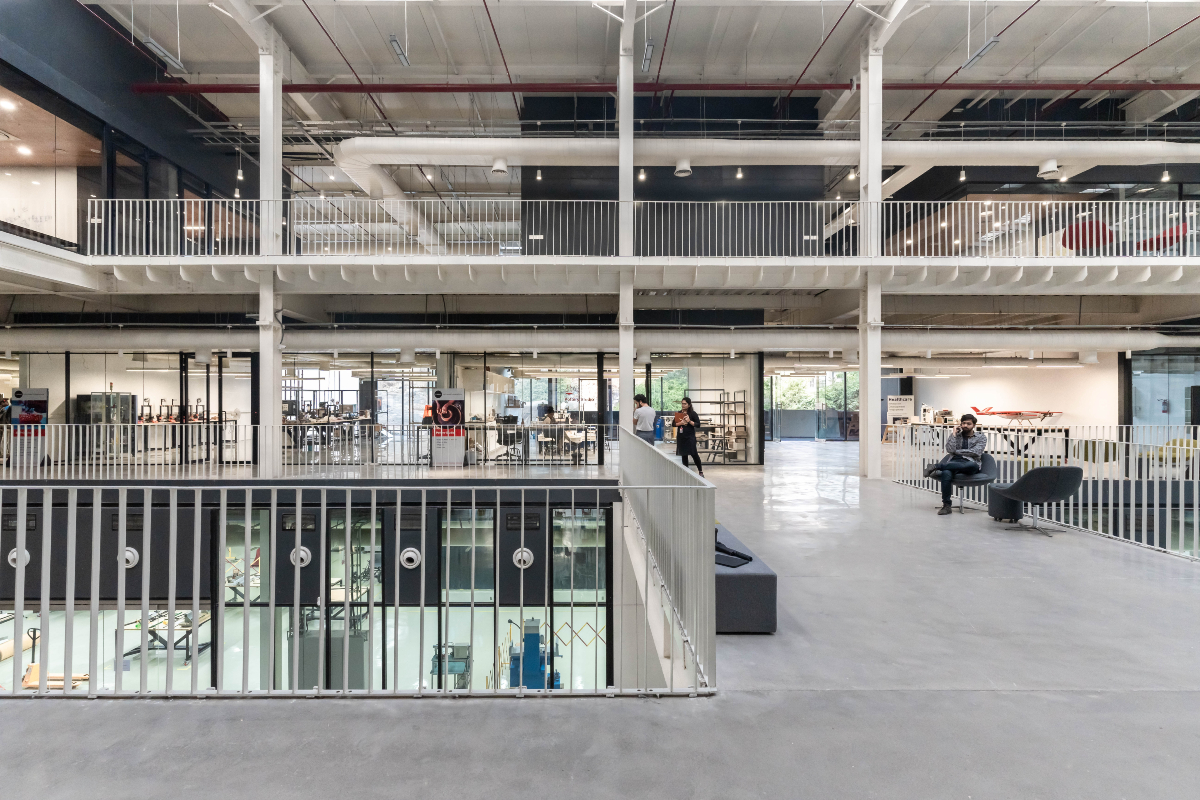
The facility’s flexible and adaptable layout is a standout feature, allowing for reconfiguration based on evolving needs. This versatility creates an environment capable of supporting a diverse range of activities, ensuring that the space remains relevant to its users. These design elements emphasise the value of thoughtful, intentional design in crafting spaces that not only fulfil immediate requirements but also inspire future creativity and innovation.
This forward-thinking design ensures that T-Works remains a hub for innovation and experimentation, capable of supporting future generations of creators. By blending adaptability with purpose-driven design, it sets a precedent for facilities that can grow and evolve alongside the needs of their users, serving as an enduring model for innovation-driven spaces.
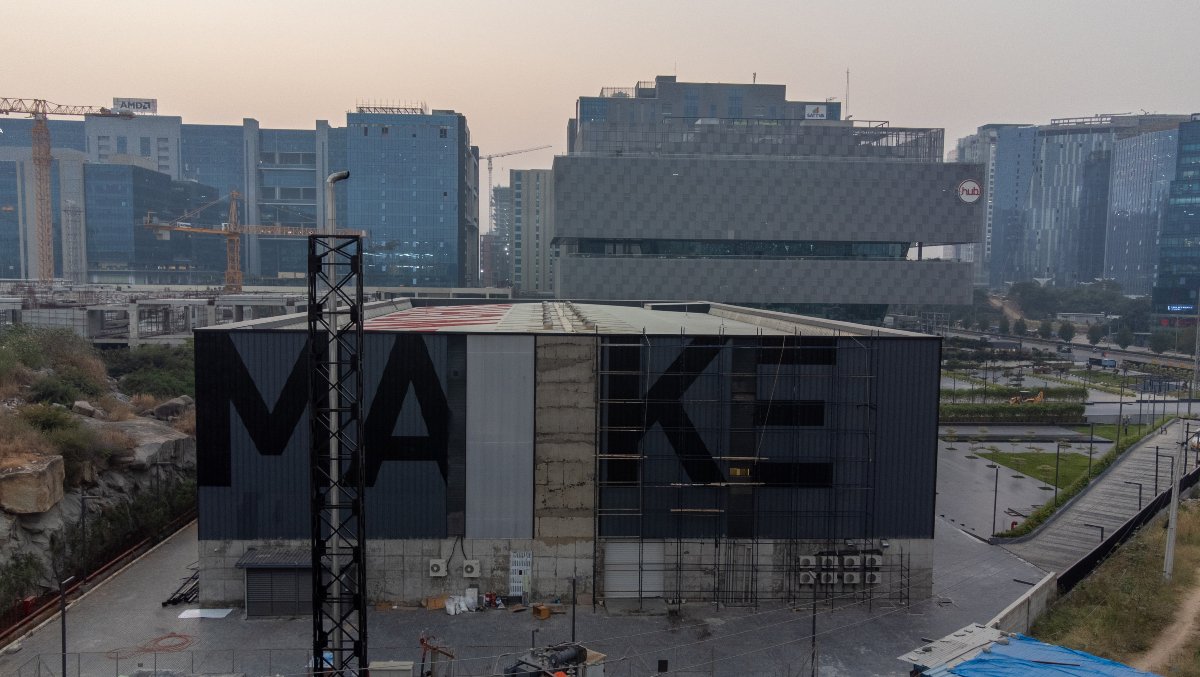
Quote
“This project was developed during the challenging period of the COVID-19 pandemic, and we truly put our heart and soul into ensuring it was a success, drawing on the lessons learned during that time. As one of the largest projects with the government, it presented both unique challenges and distinct opportunities. The design process itself was highly structured and process-driven, which provided a valuable learning experience. At the same time, the freedom and flexibility in decision-making throughout the project were remarkable, allowing us to adapt and innovate as needed.”
– Diwakar Chintala, Founder, Studio Chintala
Fact File
Project: T-Works, Hyderabad
Client: TSIIC, Telangana
Architect: Studio Chintala
Structural Consultant: Smart Minds Engineering Pvt Ltd
Project Management Consultant: T-Works Foundation
Contractor: Paramount Steel Structures Pvt Ltd
Supplier: Vizag Steel
Tonnage: 600 tonnes
Status: Completed


